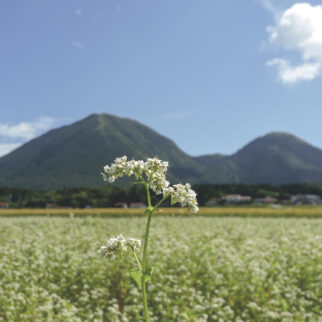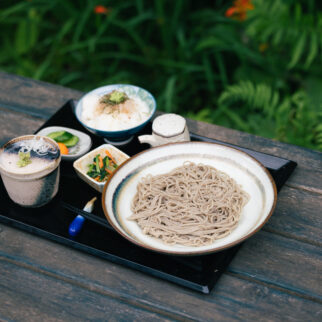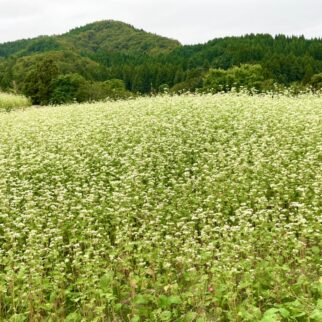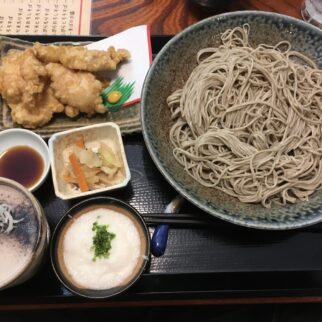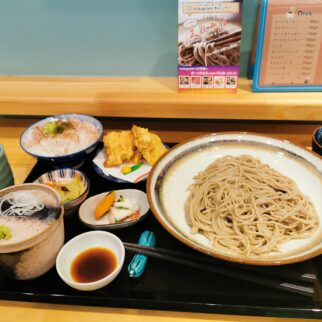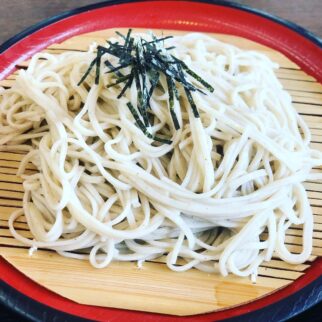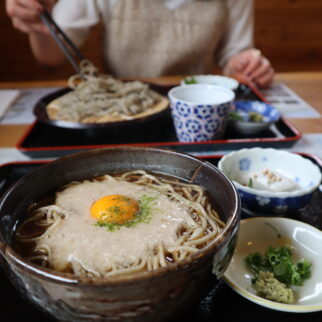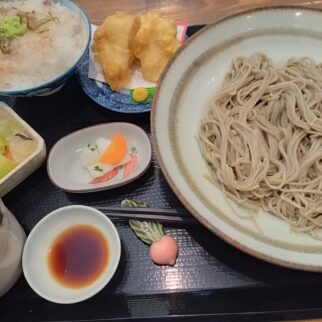 Sanbe Volcano that has nurtured
Sanbe Volcano that has nurtured
a bountiful way of life
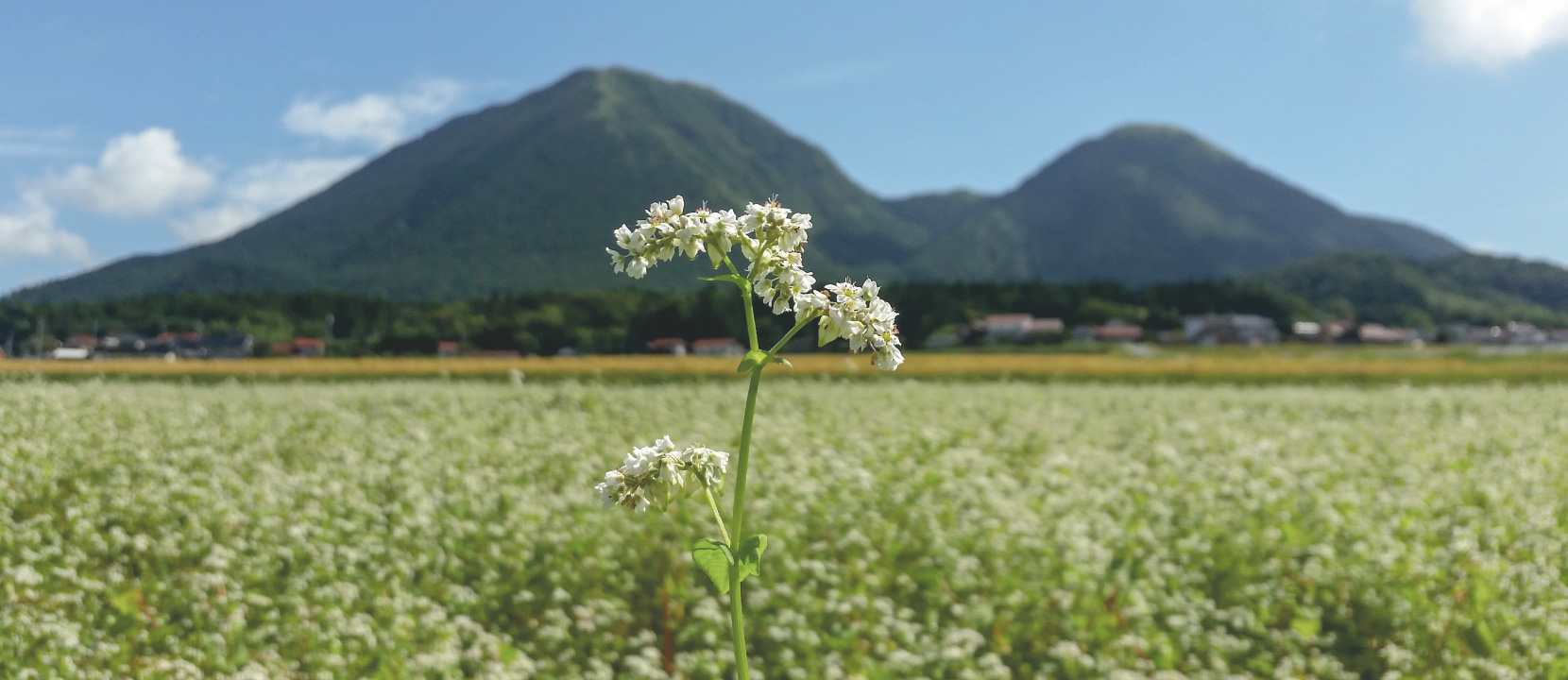
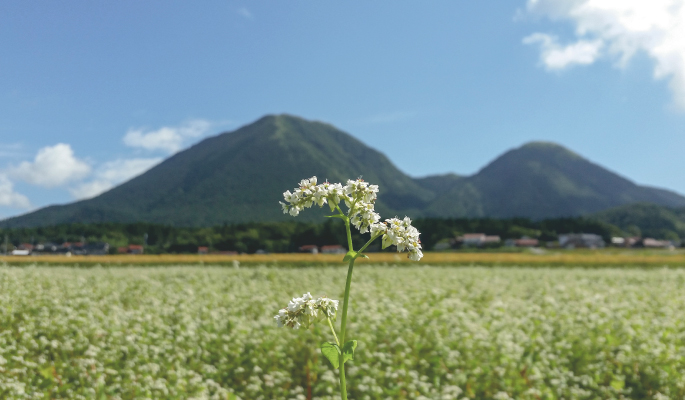
Cultivation of Sanbe Highlands
Sanbe Soba
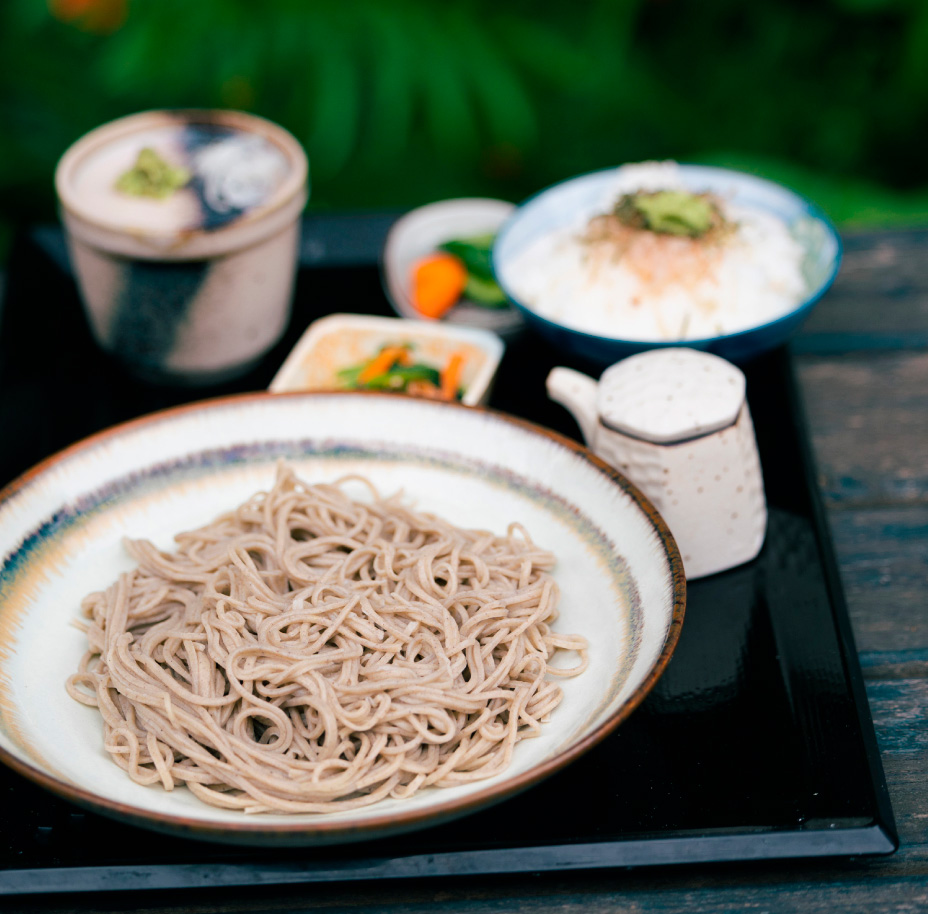
Sanbe Soba emits a mellow aroma as you bite into the thinly sliced noodles. The unique flavor that will impress even soba connoisseurs has been sustained by farmers and soba shop owners who have carefully protected the native Sanbe variety that has been passed on since the Edo period.
Buckwheat can grow even in soil with poor moisture and nutrients, and because it matures in a short period of time, it has long been actively cultivated in the Sanbe region, which has volcanic ash soil. The dramatic temperature variation of the highland climate nurtures the flavor, and in the Meiji era, it was counted as the only soba production area in western Japan. In 2020, it was registered as a Geographical Indication (GI) for the protection of local products, and its national reputation is growing once more.
Wasabi, which is an indispensable condiment in Japan, is also a special product of Mt. Sanbe. High-quality wasabi is cultivated using the abundant spring water dotted around the foot of the mountain.
Wasabi, which is an indispensable condiment in Japan, is also a special product of Mt. Sanbe. High-quality wasabi is cultivated using the abundant spring water dotted around the foot of the mountain.
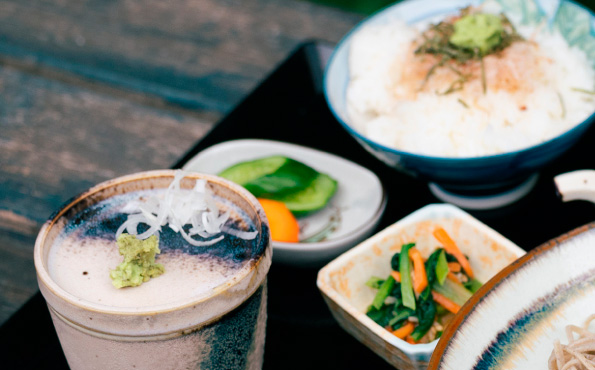

- 1Local-variety soba
- The term “local-variety soba” refers to buckwheat that has been cultivated in a region over a very long time and is distinguished from the modern improved varieties. The Sanbe local variety is grown with care to avoid cross-fertilization with other varieties, and according to the Ministry of Agriculture, Forestry and Fisheries' Geographical Indication (GI), only the soba cultivated in Oda City’s Sanbe-cho and Yamaguchi-cho is classified as “Sanbe soba.”
Buckwheat is believed to have originated primarily in southern China, and its cultivation in the Japanese archipelago began during the Jomon period (14,000 to 300 BCE). - 2Spring water and wasabi
- Although Mt. Sanbe has no surface water flowing at the foot of the mountain, some of the water that seeps into the ground flows out as spring water around the edge of the caldera. There are many springs with abundant water, which is used to cultivate wasabi.
-
- Soba Restaurant Hanaikada in Sanbe
-
- 1121-8 Tane, Sanbe-cho, Oda City, Shimane, 694-0003
- TEL: 090-1010-8607
-
- Soba Restaurant Sara
-
- 2048-1 Shigaku, Sanbe-cho, Oda City, Shimane, 694-0222
- TEL: 0854-83-2427
-
- Soba Atelier Konoka
-
- 347-1 Shigaku, Sanbe-cho, Oda City, Shimane, 694-0222
- TEL: 0854-83-2813
-
- Sanbe Onsen Soba Cafe Yumoto
-
- 1730-11 Shigaku, Sanbe-cho, Oda City, Shimane, 694-0222
- TEL: 0854-83-2215
-
- Sanbesou
-
- 2072-1 Shigaku, Sanbe-cho, Oda City, Shimane, 694-0222
- TEL: 0854-83-2011
-
- Fukuju An
-
- 125-1 Oda-cho, Oda City, Shimane, 694-0064
- TEL: 0854-84-7088
-
- Soba Restaurant Hanaikada in Oda
-
- 174-1 Oda-cho, Oda City, Shimane, 694-0064
- TEL: 090-1010-8607







